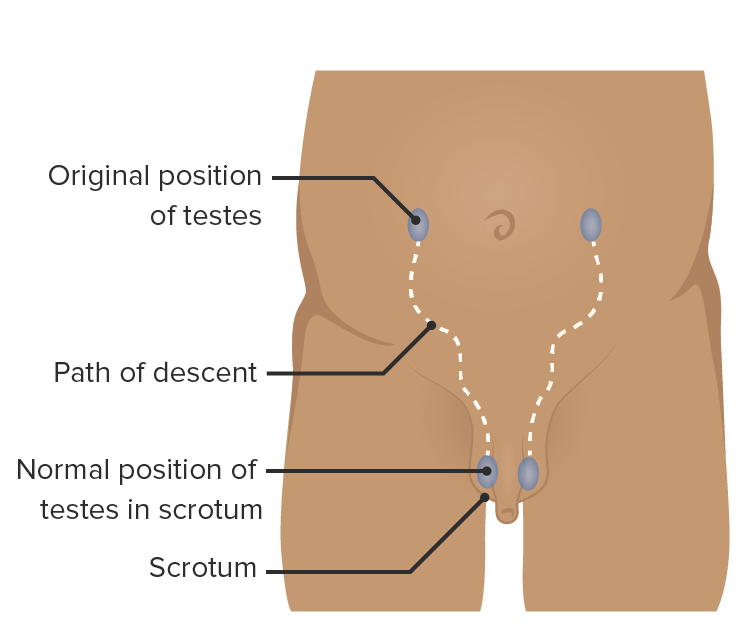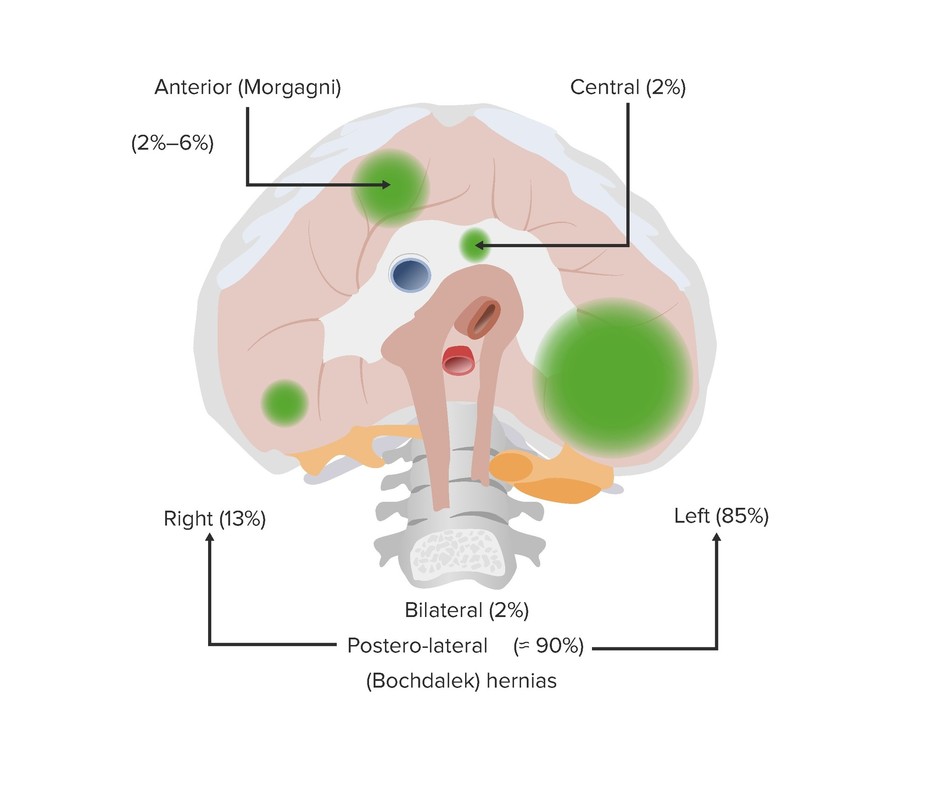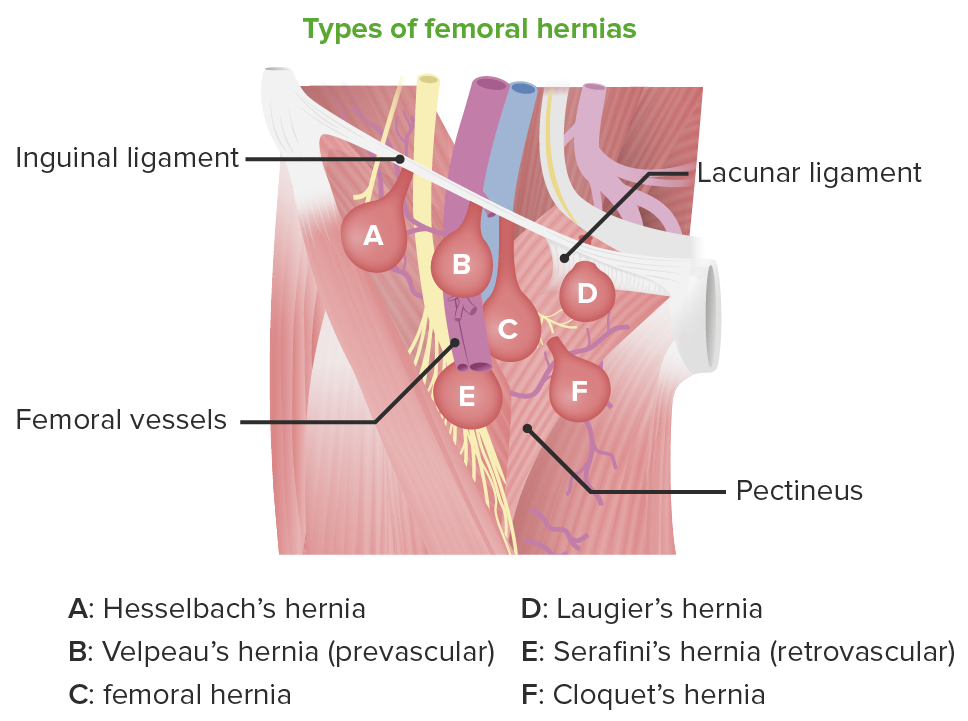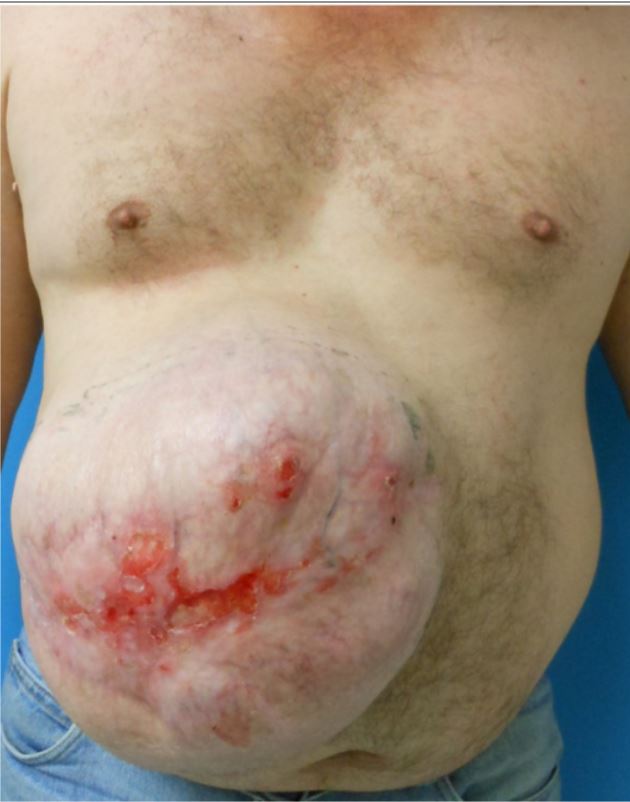Playlist
Show Playlist
Hide Playlist
Hernia: Introduction
-
Slides Hernias Surgery.pdf
-
Download Lecture Overview
00:01 Welcome back. Thanks for joining me for this module on hernias, both groin and ventral under general surgery. 00:10 Look at this huge bulge. This is what we see often in the emergency department. This patient presenting with a large bulge in the groin needs a surgical attention. But what is a hernia? I’ll give you a second to think about this. A hernia is a protrusion of abdominal content through an area of weakness anywhere along the abdominal wall. This area of weakness or defect can be congenital or acquired. Here, we see a cross-sectional image of a CT scan. You’ll see that there is content where the white arrow is. 00:51 This is the inguinal canal, likely fat or intestines containing hernia on the right side of the patient. This is classic anatomy. Let’s go over it really quickly. We divide the abdominal wall layers above or below the arcuate line. 01:11 The arcuate line occurs about half the distance between the umbilicus and the pubic crest. 01:16 Above the arcuate line, as you know, there are multiple layers of the abdominal wall. There is the aponeurosis of the external oblique, internal oblique, and transversus underlying transversalis fascia and the peritoneum. Above the arcuate line, the internal oblique actually separates to contribute to both the anterior and posterior rectus sheath. 01:43 Below the arcuateline however, all layers of the abdominal wall go above to contribute to the anterior rectus sheath. This is particularly why below the belly button, we have a natural area of weakness. 01:58 What’s the difference between an incarcerated and strangulated hernia? I’ll give you a second to think about this. This is the depiction of an incarcerated hernia that is not reducible. Again, an incarcerated hernia simply means it is not reducible. There are patients who have an acute incarceration as well as a chronic incarceration. That difference is very important in determining whether or not the patient needs urgent surgery. However, a strangulated hernia is by definition, where the blood supply is compromised. It’s true. Most strangulated hernias are incarcerated but not all incarcerated hernias are strangulated.
About the Lecture
The lecture Hernia: Introduction by Kevin Pei, MD is from the course General Surgery.
Included Quiz Questions
Which of the following answer choices is TRUE about the anatomy of abdominal wall?
- The internal oblique aponeurosis separates above the arcuate line to contribute to both the anterior and posterior rectus sheaths.
- The external oblique aponeurosis separates below the arcuate line to contribute to both anterior and posterior rectus sheaths.
- The external oblique aponeurosis separates above the arcuate line to contribute to both anterior and posterior rectus sheaths.
- The abdominal wall is weaker above the arcuate line than below the arcuate line.
- The arcuate line can be located at the level of the anterior superior iliac spine.
Which statement about hernias is FALSE?
- All incarcerated hernias are strangulated.
- All strangulated hernias are incarcerated.
- An incarcerated hernia means the hernia cannot be reduced.
- A strangulated hernia means the hernia has compromised blood supply.
- Strangulated and incarcerated hernias often need urgent surgical intervention.
Customer reviews
3,0 of 5 stars
| 5 Stars |
|
1 |
| 4 Stars |
|
0 |
| 3 Stars |
|
0 |
| 2 Stars |
|
0 |
| 1 Star |
|
1 |
I think the anatomy could have been explained much better. I found myself constantly pausing the video to find the specific structures mentioned in some parts.
Very clear and concise explanation. But, could have more questions.







